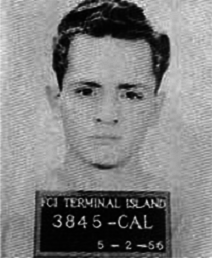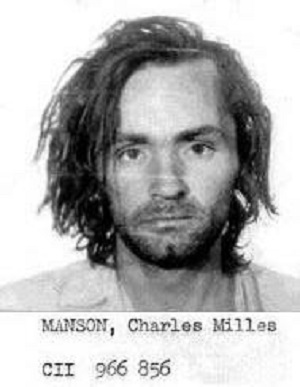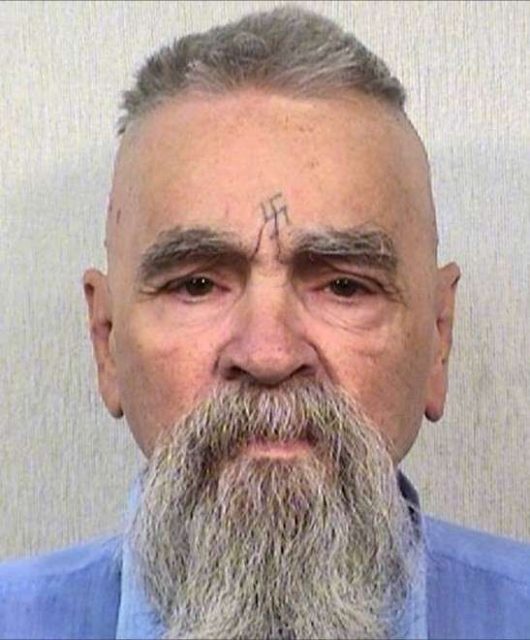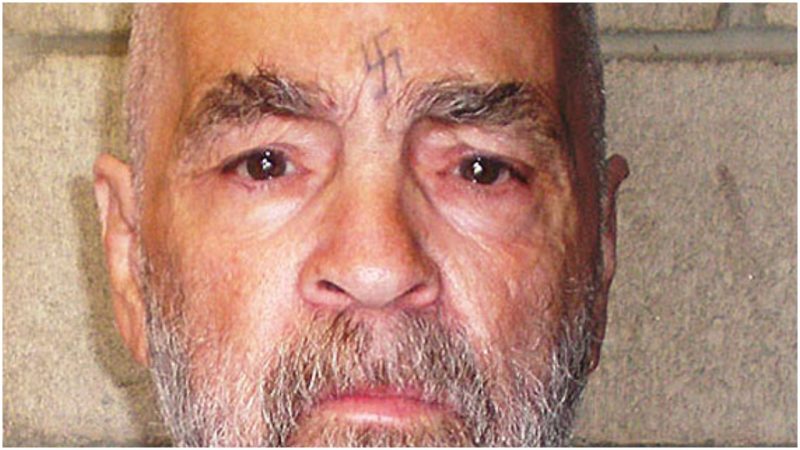Charles Manson, the 1960s cult leader convicted in the horrific murders of nine people, including actress Sharon Tate, died at the age of 83 in a hospital in Bakersfield, California, on November 20, 2017. Manson was sentenced to death for first-degree murder and conspiracy in 1971, but the sentence was commuted to life imprisonment after California rid itself of the death penalty in 1972.
Arrested for burglary before he was 13 years old, the Ohio-born Manson spent most of his life behind bars. After he was released from prison in 1967, Manson traveled to San Francisco and become a guru during the “Summer of Love,” attracting young people, mostly runaway teenage girls, who believed in him completely. Several members of “the Family” murdered for him without question.
“We wanted to do a crime that would shock the world, that the world would have to stand up and take notice,” Susan Atkins, a follower of Manson’s, told a cell mate. Atkins, one of Manson’s three female co-defendants in the infamous seven-month-long trial, died of cancer in prison in 2009. The two who remain, Leslie Van Houten and Patricia Krenwinkle, have sought parole unsuccessfully.

The murders that Manson and his followers committed that shocked the world were: A pregnant Tate and her friends, Jay Sebring, Abigail Folger, and Voytek Frykowski, slaughtered at the Benedict Canyon house Tate had rented with her husband, Roman Polanski, on August 9, 1969; Steven Parent, an acquaintance of the house’s caretaker, murdered in the Tate driveway that same night; Leno and Rosemary LaBianca, a middle-aged couple, murdered in their Los Feliz home the following night; Gary Hinman, a music teacher, killed earlier, on July 31, 1969, after he wouldn’t give the Family money; and Donald “Shorty” Shea, an employee at Spahn Ranch, where the Family lived, killed on August 26, 1969, because he was suspected of being a “snitch.”
What may be less well known is that some experts on the Manson Family are convinced that the group killed more people than those nine. During separate conversations in prison by Manson and his number two in command, Charles “Tex” Watson, serving his own life sentence, the number given was 35.
“No one was ever certain just how many murders might be connected to the Family,” wrote Jeff Guinn in his book Manson: The Life and Times of Charles Manson. In the author’s view, Charles Manson was an “opportunistic sociopath.”
In 2008, responding to persistent stories, police searched the area around one of the former homes of the Family for human remains, but found nothing.
While some of the unexplained deaths or disappearances are believed to be people who seem to have “crossed paths” with the homicidal group at the wrong time, several cases are those who were allegedly eliminated because they knew too much about the Family’s crimes or opposed Manson’s will. What follows are the stories of several victims.

On November 5, 1969, after the Tate-LaBianca murders but before Manson or any of his followers had been charged with those crimes, the police were called to a house in Venice, California. A young man, John Philip Haught, was dead of a gun wound to the head. A party had been going on that night, and the young man’s friends told police that Haught, depressed, was playing Russian Roulette. The police accepted the suicide story.
What came out later was that Haught was a member of the Family, and the “friends” who told police about the suicide were hard-core Manson followers Bruce Davis, an ex-con, and Cathy Gillies. Gillies later said in court that she had wanted to go with the others to Sharon Tate’s home that fateful night but there was no room in the car. Her testimony was “chilling,” according to Helter Skelter, the bestseller written by Manson prosecutor Vincent Bugliosi.
Haught, whose Family nickname was “Zero,” had joined the Family while they lived at Spahn Ranch and was arrested with the others in a raid on Barker Ranch in Death Valley, where the Family moved to after Spahn. There were a number of Family members who knew something about the murders and were not as enthralled with Manson as the others and wanted to break away, and perhaps even talk to the authorities. It’s believed that Zero was one of those members.
After what happened that night in Venice, “potential weak link Zero was dead,” wrote Jeff Guinn.
Another supposed suicide of a family member was Joel Pugh, the husband of hardcore Family member Sandra Good. The two had a child together, but then divorced. Stephen Kay, one of the prosecutors of the Manson case, said, “Charlie wanted very much for Sandy Good not to be married, because her father had been very wealthy. He left a trust fund that paid her $200 a month, which was the money the Manson Family lived off most of the time; that was their biggest source of income… Joel was an irritant, and Manson didn’t want anyone getting in the way of him and the trust fund.”
Before the murders, Pugh went to London with Bruce Davis on Manson’s orders; the reason was unclear. Davis returned to California, but Pugh did not. On December 1, 1969, the same day that the Los Angeles police announced at a press conference the arrest of Charles Manson and several of his followers, Pugh was found dead in a London hotel room. The room was covered in blood. Pugh’s throat had been cut and his wrists slashed.
Paul Whiteley, a police detective in Los Angeles who investigated the murder of Gary Hinman in 1969, said in an interview: “I’m almost certain Joel Pugh was murdered in England by a Manson Family member called Bruce Davis. We know he was in London at the same time and we heard from an informant that the Family had struck in Britain, but we were never able to get Scotland Yard interested in the case. I spoke to them and they just wouldn’t listen.”
Prosecutor Kay said of Pugh, “Manson despised him. People who Manson hated ended up dead.”
In recent years, thanks to DNA evidence, a young woman’s murder has been connected to Manson and specifically to Haught’s death. She was someone who could have been another “weak link” to Manson.
In 1969, a child made a grisly find near Sharon Tate’s home on Mulholland Drive: a dead woman who had been stabbed 150 times. The police were not able to identify her, and the woman became Jane Doe No. 59.
But thanks to DNA evidence analyzed in 2015, police were finally able to put a name to her: Reet Jurvetson, who left Montreal at the age of 19 to see a friend in California.
In Helter Skelter, Bugliosi wrote that he believed “Jane Doe No. 59″ was killed because she had witnessed the murder of Haught and could not be relied on to stay quiet. Police are currently investigating Jurvetson’s murder.

Perhaps the most famous death connected to Manson but one he was never charged with was Ronald Hughes, one of the defense attorneys in the Manson trial. Originally a public defender with little experience, Hughes was appointed to represent Leslie Van Houten. He was seen as a hippie lawyer, and the speculation was that Manson thought he could be easily controlled. Manson’s plan was for the three female defendants to take full responsibility for the murders.
But over the course of the trial, Hughes gained in confidence and began to defend Van Houten more vigorously than Manson wanted him to, and quarrels broke out. During a 10-day court break, while the other attorneys were preparing for the looming final arguments, Hughes said he wanted to go on a camping trip. He never returned. Searches of the camping ground yielded no clues. The judge in the case was forced to replace Hughes.
On March 29, 1971, Hughes’ decomposed body was discovered by two fishermen. His body was found wedged between two boulders in a gorge. Bugliosi believed he was murdered on Manson’s orders, while others say he met with an accident while fishing.
Bugliosi’s colleague, Steven Kay, said of the lawyer’s death, “The last thing Manson said to him [Hughes] was, ‘I don’t want to see you in the courtroom again,’ and he was never seen again alive.”
